O dark dark dark


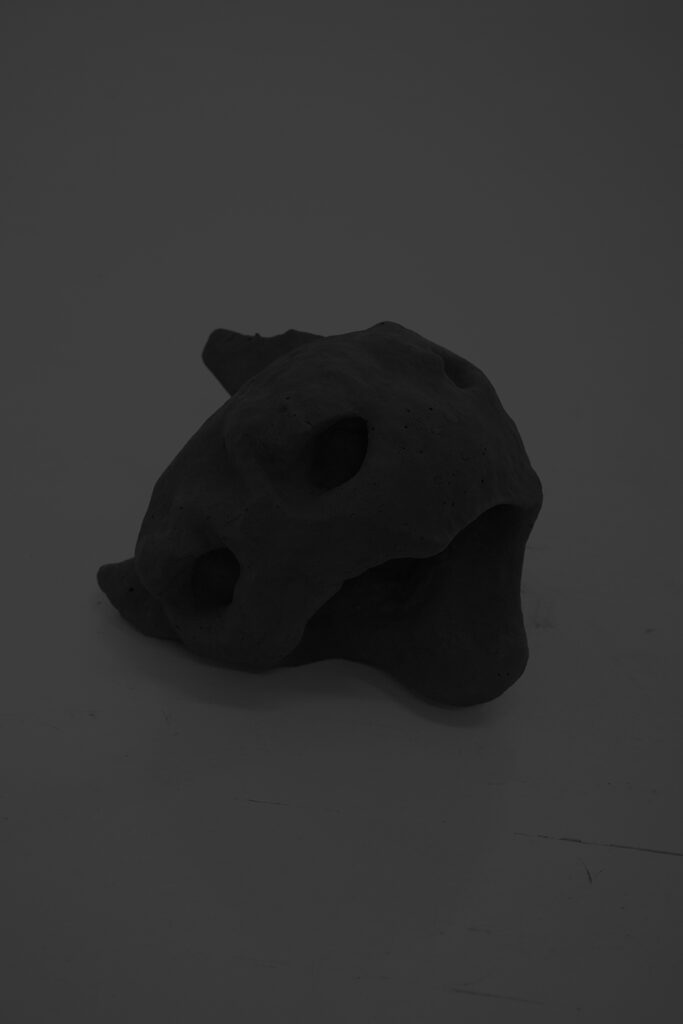
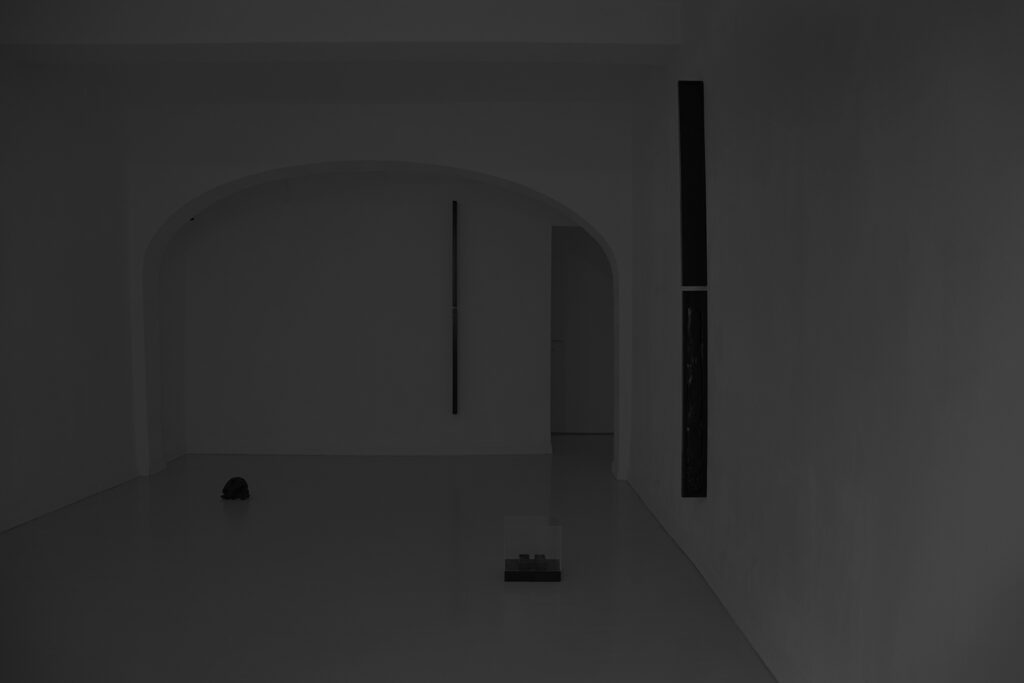
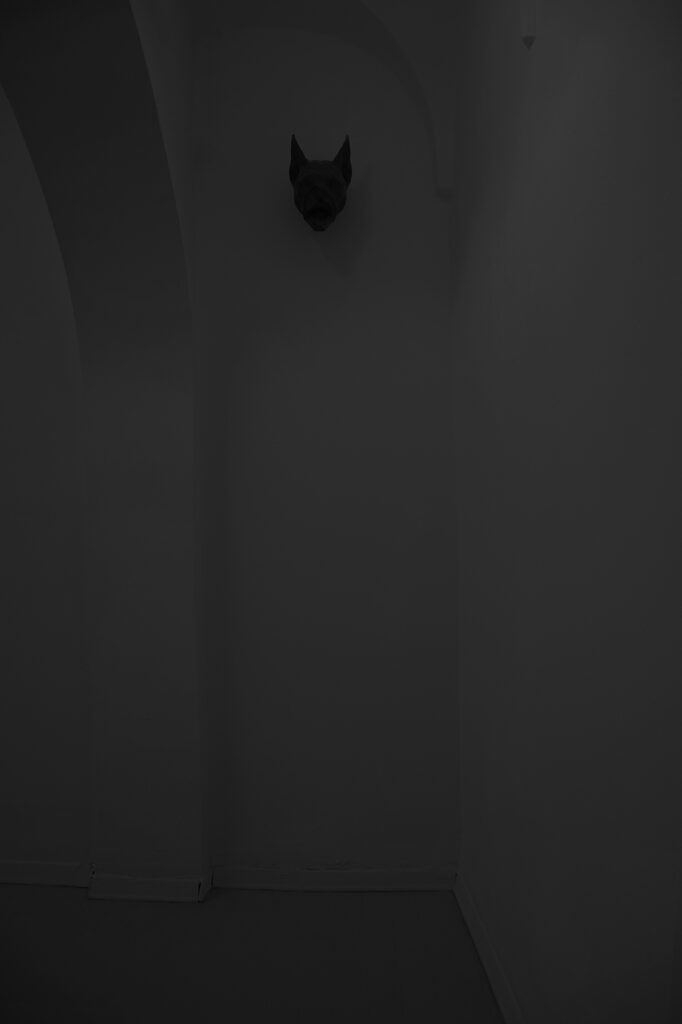
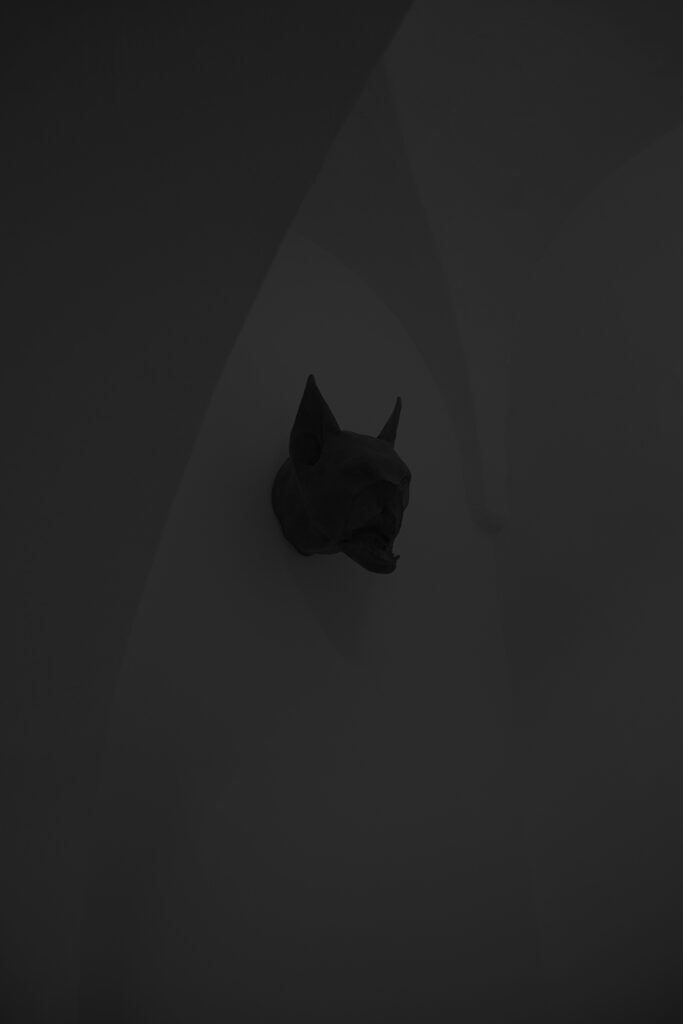
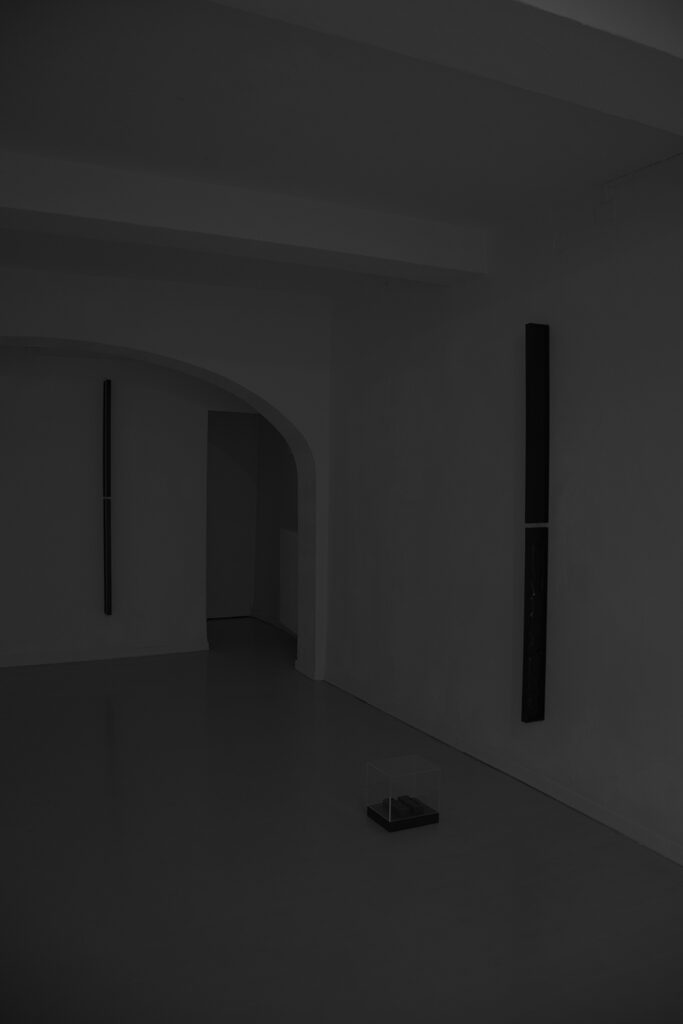



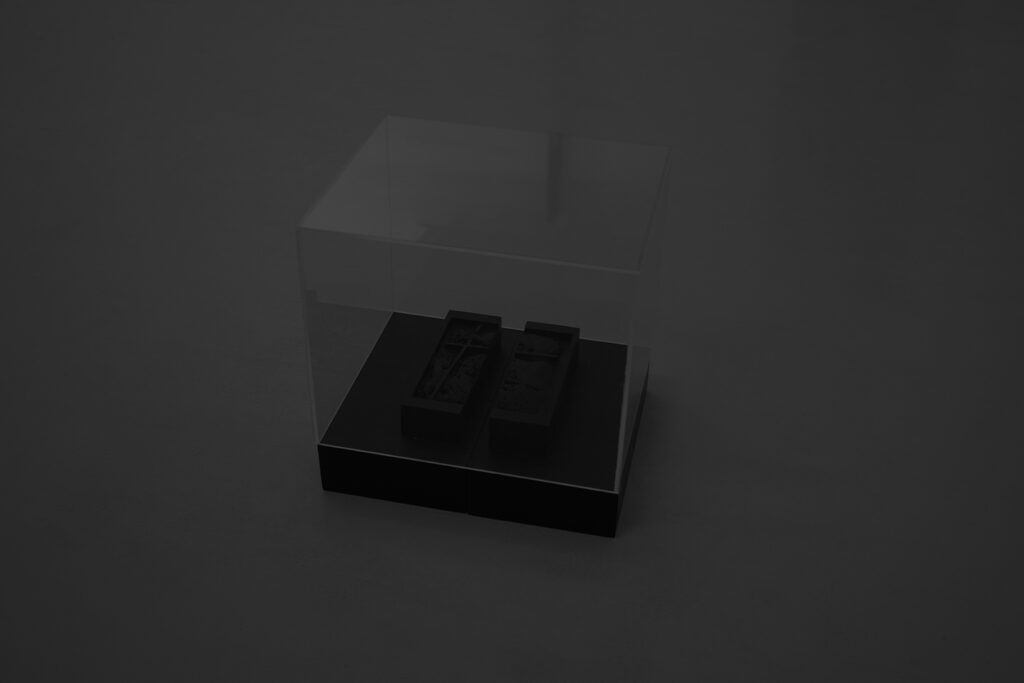
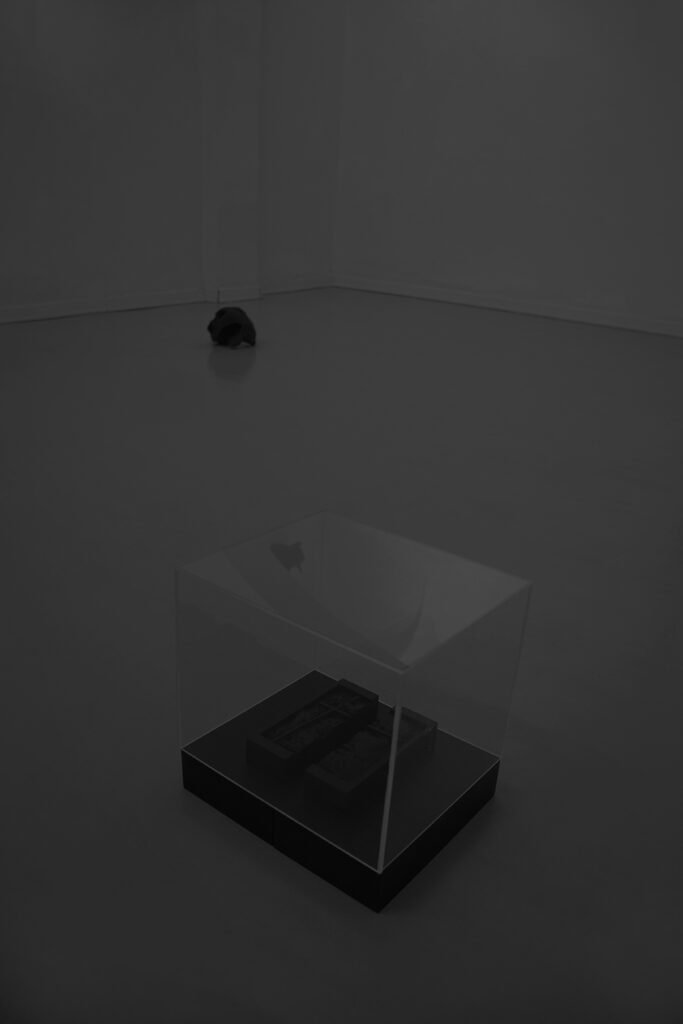
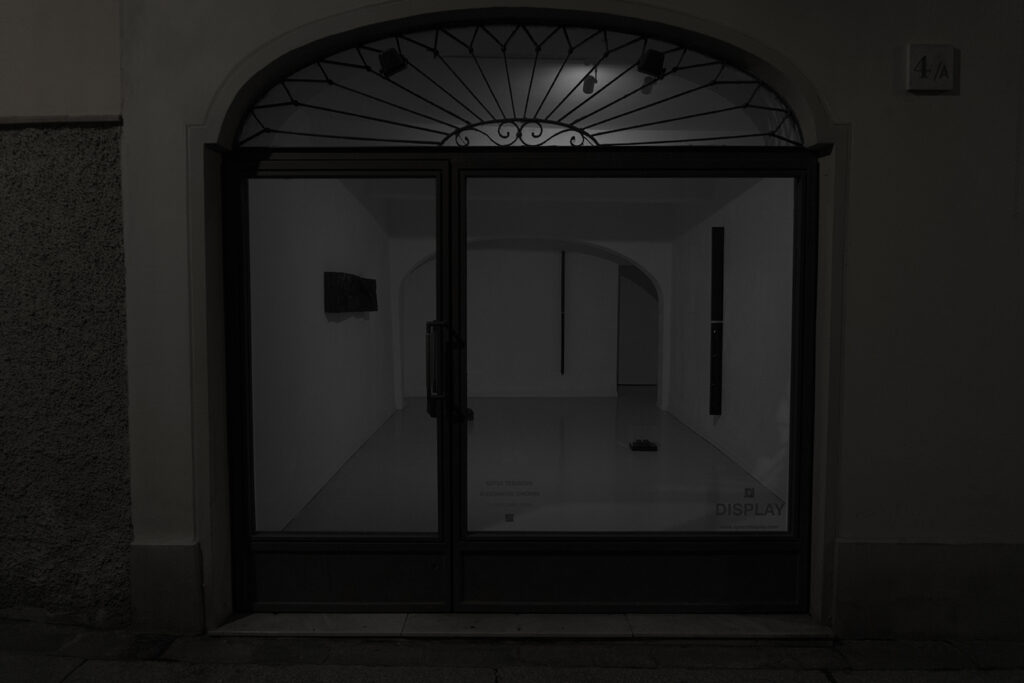
O dark dark dark. They all go into the dark,
The vacant interstellar spaces, the vacant into the vacant,
The captains, merchant bankers, eminent men of letters,
The generous patrons of art, the statesmen and the rulers,
Distinguished civil servants, chairmen of many committees,
Industrial lords and petty contractors, all go into the dark
And dark the Sun and Moon
(T. S. Eliot, East Coker, 1940)
Black, darkness multiplied, repeated, concentrated. Black is both origin and end, the thin threshold between memory and oblivion. Not merely the absence of light, but the very substance of memory: a substratum where the visible settles and vanishes, leaving behind traces of the past and omens of an imminent future. It is the root and the fate of the visible, the place where form dissolves and reconfigures itself.
Sofiia Yesakova and Alessandro Simonini meet within this dialectic, overturning monochrome into polysemy: absolute black is not mere reduction, but a field of tension which questions the relationship between structure and rupture, violence and abstraction. Black demands a searching gaze, a passage through. Both artists share an approach where artistic practice, though yielding distinct results, is deeply intertwined with philosophical thought and informed by anthropological and ecological inquiry.
Yesakova crafts sculptures where gesture and perception are suspended between presence and negation, capturing traces of a movement frozen in time. Through a combination of formal rigor and references to the violence of history and sacred and pagan iconography, Yesakova compels the viewer to confront the invisible and the repressed. In her works, black is a paradox: it means erasure, but also memory; silence, yet also a layering of voices waiting to be unraveled. In her austere minimalism, geometry imposes a sterile, unshakable order, confining perception within the margins of form. Yesakova draws on Foucault’s reflections on surveillance and imprisonment, translating them into sculptures where control over her work corresponds to control over the viewers’ sensitivity, forcing them to decipher the tension hidden beneath dark surfaces. In her practice, black accumulates memories that never fully reveal themselves. Only in the layered details does a story begin to emerge — one that Yesakova rewrites like a code etched into wood and buried beneath dense black pigment. This veiled inscription addresses the distance between past and present, tragedy and its reduction to mere statistics. Black, for the artist, is thus both an instrument of organization and obliteration, the echo of unrealized utopias, of historical events translated into numerical data. In this operation, rigor itself comes to resemble an act of violence and coercion: modular and regular forms exclude chaos, yet simultaneously preserve it. The work, like a hypertext, unfolds narratives that demand attentive reading and interpretation.
Alessandro Simonini’s works emerge from in-depth research into iconography and symbolic language, exploring the interaction between matter and transformation, traditional artistic techniques and new technologies. His sculptures are fragments of a personal inquiry into matter, particularly charcoal, which serves both as a symbol and physical substance. Fire and combustion generate the image; his sculptures, conceived as archives of remnants, invite reflection on ephemerality, permanence, and the inevitability of mutation. Like an alchemical and ontological exercise, combustion becomes the means by which destruction is transfigured into creation. Charcoal clings to the image like skin, like memory. Once the residue of organic life, it now endures as a tangible trace. A large frieze with classical echoes depicts the carcass of an ox; zoomorphic heads evoke the gargoyles of Gothic cathedrals. Simonini’s lexicon draws upon architectural and iconographic elements, bringing his work closer to the concept of the monument—celebrating memory, evoking history, and contemplating catastrophe through its ruins. At times, he deliberately damages his own sculptures, only to gather and reassemble the shattered fragments, challenging the very integrity of the work, where destruction and restoration coexist in tension. In this, his works resonate with the contradictions of Timothy Morton’s Dark Ecology, which, in the shadow of the current ecological crisis, reconfigures our daily coexistence with catastrophe. For Simonini, the alternation of aggression and repair represents the core of a poetics in which the fundamental nature of the image lies between conflict and restoration: his works function as palimpsests, where scars, incisions, and transformations generate forces that clash and converge, materializing as marks and traces.
In the works of Simonini and Yesakova, black is a space of tension and crisis, a surface that conceals layers, stratifications, incised and incendiary details. It is the visual articulation of Deleuze’s principle in which repetition is never identical to itself, but always variation, difference, a process in motion. That repetition is never identical to itself, but always a variation, a process in motion. Yesakova examines repetition through the systematization of violence: historical classification, the conversion of tragedy into sequence, the reduction of reality to structure. Simonini, by contrast, engages with repetition through material and its iterations, where uniqueness resides in the fragment. In both cases, black is an accumulation, an entity in becoming which resists full interpretation. It is an act of erasure and a site of renewal, a space where ruin and resurgence intertwine. Black is a premonition, a question, an unresolved tension. O dark dark dark. They all go into the dark.
______
Sofiia Yesakova (Kyiv, UA, 1998) lives and works in Berlin. She holds a Master of Fine Arts from the National Academy of Fine Arts and Architecture in Kyiv and is currently participating in the Goldrausch Künstlerinnen postgraduate program in Berlin. She is a member of Frontviews at HAUNT Berlin, where she is also part of the curatorial board. Her most recent exhibitions include: 2024, Ugly scenes, nuances, super bien! Berlin, Berlin, DE; Recollecting the emptiness, Prima Kunst e. V., Kiel, DE; People in Paradise will enjoy the spectacle of hell’s torment, Antwerp Art Box, Antwerp, BEL; Fatmah, Contemporary Cluster Gallery, Roma, IT; After the dust settles, Echo Contemporary Art, TSA GVL, Atlanta, USA; Analysis of Anger, Zentrale für Kunst, Werkschauhalle Spinnerei, Leipzig, DE; I only work with lost and found, Kreuzberg Pavillon/Bethanien, Berlin, DE.
Alessandro Simonini (Modena, IT, 1985) lives and works in Milan. In 2012, he earned a Master’s Degree in Visual Arts from DAMS, Bologna. In 2019, he was an artist-in-residence at Viafarini, Milan. His most recent exhibitions include: The last off-site show on the Earth at Plague Space and everywhere, curated by Plague Pro, Plague Space, Krasnodar, 2024; FLUIDUM 2, curated by Stefano Comensoli_Nicolò Colciago (Spazienne) and Elisabeth Sonneck (super bien! Berlin), Fabbrica del Vapore, Milan, 2023; FLUIDUM, curated by Stefano Comensoli_Nicolò Colciago (Spazienne) and Elisabeth Sonneck (super bien! Berlin), Pavillon am Milchhof, Berlin, 2023; WHELLCOME PRELUDE, Edicola Radetzky, Milan, 2022; Italian Twist, curated by Elisa Carollo and Mattia Solari, Gallerie delle Prigioni, Treviso, 2021; JUDGE-MENTAL (torture), curated by Giulia Pollicita, Una Vetrina, Rome, 2020; STRINGS. LIGHT AND VISION, curated by Maria Abramenko, White Noise Gallery, Rome, 2019.


